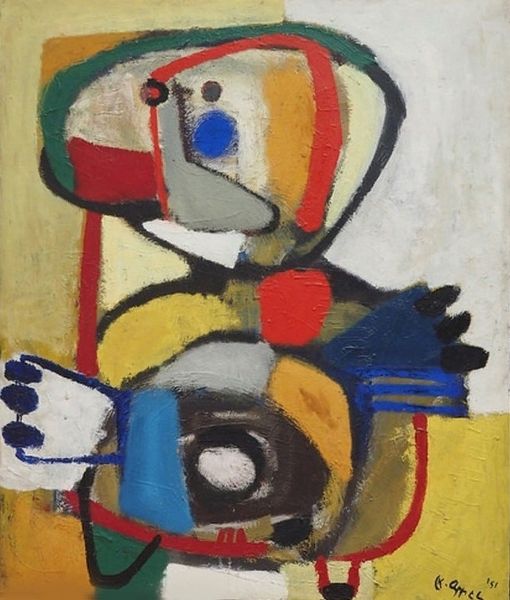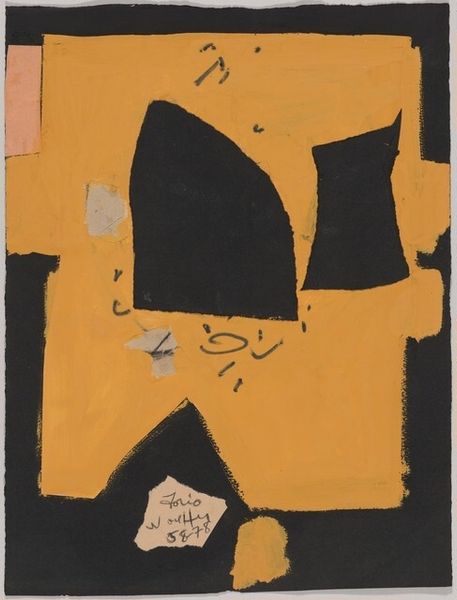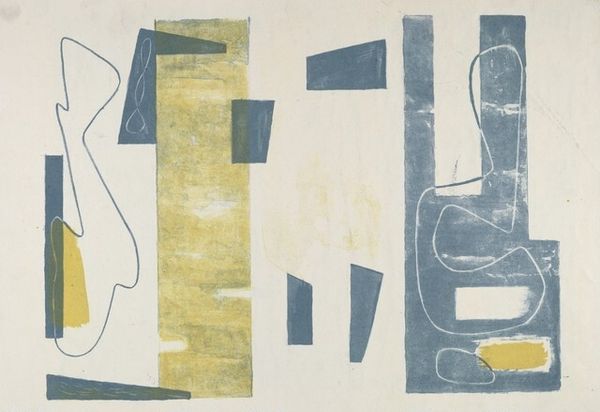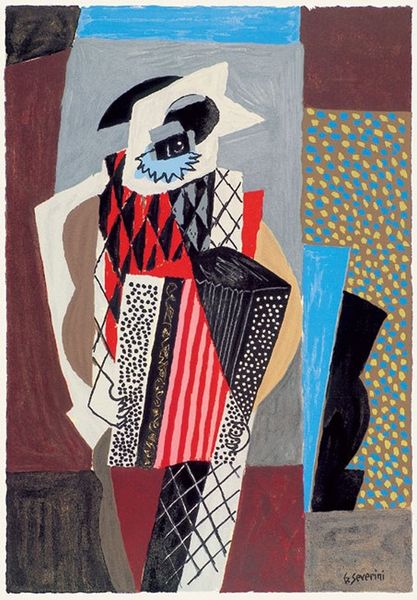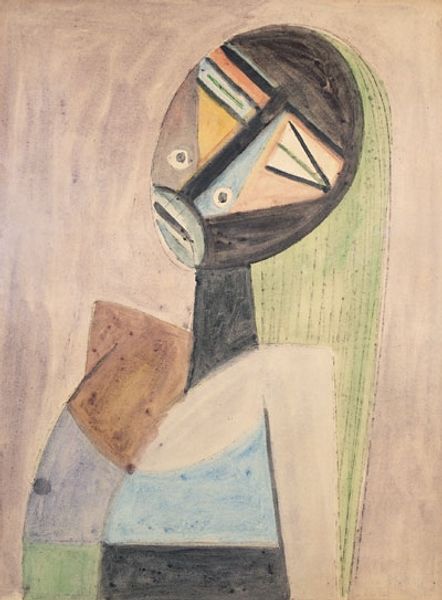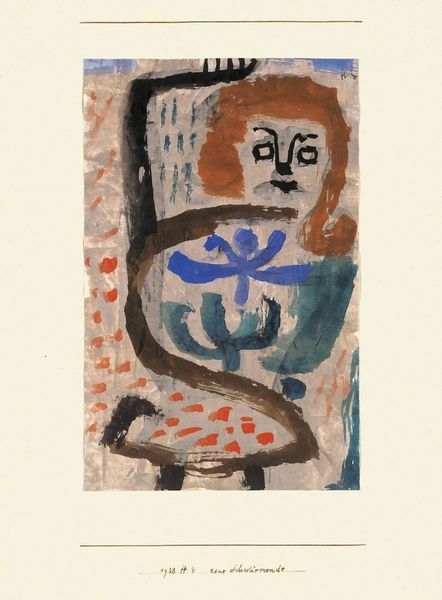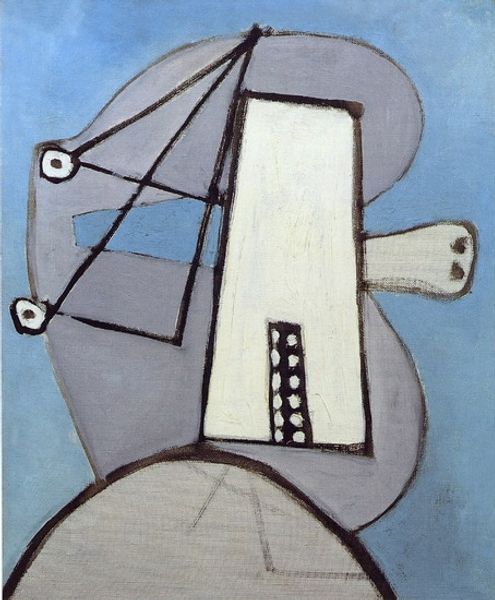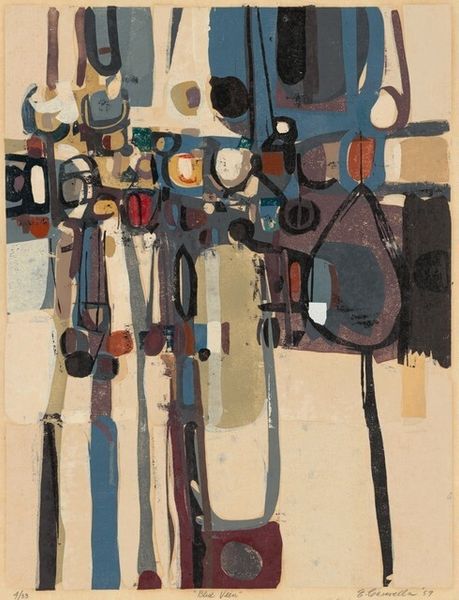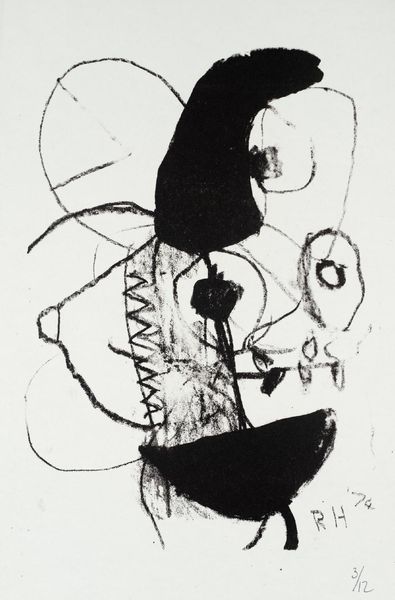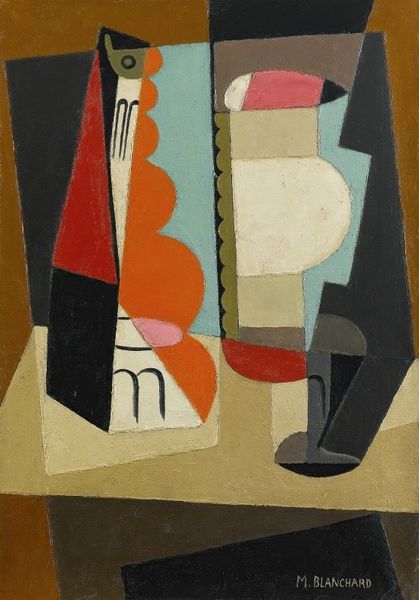
painting, oil-paint
#
acrylic
#
painting
#
oil-paint
#
painted
#
possibly oil pastel
#
abstraction
#
surrealism
#
modernism
Copyright: Public domain
Arshile Gorky made “The Raven (Composition No. 3)” in 1943 using oil and graphite. It is a biomorphic abstraction, but the title insists that we seek out the bird in its forms. As a figure, the raven has rich cultural associations that we can explore. In Armenian folklore, where Gorky was born, the raven is often seen as a harbinger of change, or as a guide between worlds. Back in the US where Gorky was working, Edgar Allan Poe’s poem of 1845 had popularized the raven as a symbol of ill omen and of the uncanny. Gorky's painting speaks to the condition of modern art in the 1940s. On the one hand, it shows the growing influence of European surrealism on American art institutions like the Museum of Modern Art and Peggy Guggenheim’s Art of This Century Gallery. But it also anticipates a more purely abstract art that would be free of literary association. Understanding the historical context of Gorky’s work requires that art historians look at both the artist's personal biography, and the larger institutions in which he came to prominence.
Comments
No comments
Be the first to comment and join the conversation on the ultimate creative platform.
